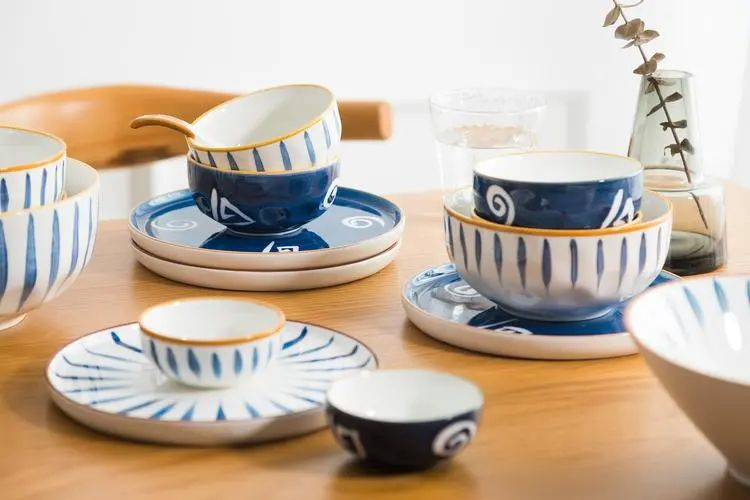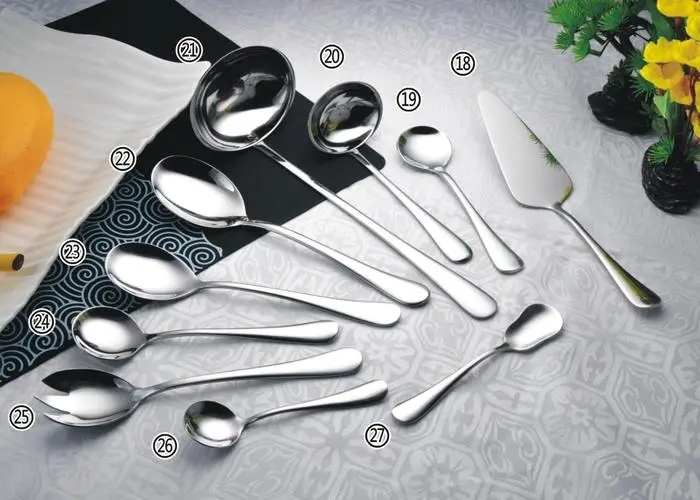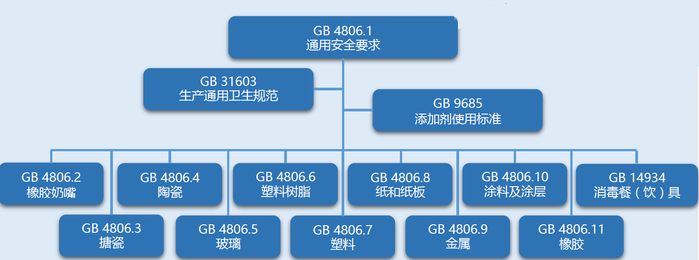
China's GB4806 food contact material testing standard was issued in 2016 and officially implemented in 2017. As long as the product may come into contact with food, it must comply with the food-grade GB4806 standard, which is a mandatory requirement.
GB4806 control scope

GB4806-2016 testing standard for food contact materials:
1.Polyethylene "PE": including plastic packaging bags, packaging boxes, plastic wrap, plastic film bags, etc.
2. PET "polyethylene terephthalate": mineral water, carbonated drinks, and such products have certain storage conditions.
3. HDPE "High Density Polyethylene": soymilk machines, milk bottles, fruit drinks, microwave oven tableware, etc.
4. PS "Polystyrene": Instant noodle boxes and fast food boxes cannot contain acidic or alkaline foods.
5. Ceramics/enamel: Common ones include tea cups, bowls, plates, teapots, jars, etc.
4. Glass: insulated water cups, cups, cans, bottles, etc.
5. Stainless steel/metal: insulated water cups, knives and forks, spoons, woks, spatulas, stainless steel chopsticks, etc.
6. Silicone/rubber: children's pacifiers, bottles and other silicone products.
7. Paper/cardboard: mainly for packaging boxes, such as cake boxes, candy boxes, chocolate wrapping paper, etc.
8. Coating/Layer: Common examples include water cups (that is, the color coating of colored water cups), children's bowls, children's spoons, etc.

GB 4806.1-2016 "National Food Safety Standard General Safety Requirements for Food Contact Materials and Products"
GB 4806.2-2015 "National Food Safety Standard Pacifier"
GB 4806.3-2016 "National Food Safety Standard Enamel Products"
GB 4806.4-2016 "National Food Safety Standard for Ceramic Products"
GB 4806.5-2016 "National Food Safety Standard Glass Products"
GB 4806.6-2016 "National Food Safety Standard Plastic Resins for Food Contact"
GB 4806.7-2016 "National Food Safety Standard Food Contact Plastic Materials and Products"
GB 4806.8-2016 "National Food Safety Standard Food Contact Paper and Paperboard Materials and Products"
GB 4806.9-2016 "National Food Safety Standard Metal Materials and Products for Food Contact"
GB 4806.10-2016 "National Food Safety Standard Food Contact Paints and Coatings"
GB 4806.11-2016 "National Food Safety Standard Rubber Materials and Products for Food Contact"
GB 9685-2016 "National Food Safety Standard Standard for the Use of Additives for Food Contact Materials and Products"
GB4806 basic requirements for food grade testing
When food contact materials and articles come into contact with food under recommended conditions of use, the level of substances migrated into food should not harm human health.
When food contact materials and products come into contact with food under recommended use conditions, the substances migrated into the food should not cause changes in the composition, structure, color, aroma, etc. of the food, and should not produce technical functions for the food (unless there are special provisions) .
The amount of substances used in food contact materials and products should be reduced as much as possible on the premise that the expected effects can be achieved.
Substances used in food contact materials and products should comply with corresponding quality specifications.
Manufacturers of food contact materials and products should control unintentionally added substances in products so that the amount migrated into food meets the requirements of 3.1 and 3.2 of this standard.
For substances that are not in direct contact with food and have effective barriers between them and are not included in the corresponding national food safety standards, food contact materials and products manufacturers should conduct safety assessment and control on them to prevent their migration into food. The amount does not exceed 0.01mg/kg. The above principles do not apply to carcinogenic, mutagenic substances and nano-substances, and should be implemented in accordance with relevant laws and regulations. The production of food contact materials and products should comply with the requirements of GB 31603.
General requirements for food contact materials
The total migration amount of food contact materials and products, the usage amount of substances, specific migration amount, total specific migration amount and residual amount, etc. should comply with the total migration limit, large usage amount, total specific migration amount and the amount in the corresponding national food safety standards. regulations such as maximum residue levels.
Special requirements for food contact materials
For the same (group) substance listed in both GB 9685 and product standards, the substance (group) in food contact materials and products should comply with the corresponding limit regulations, and the limit values must not be accumulated. Various materials in composite materials and products, combined materials and products, and coated products should comply with the provisions of the corresponding national food safety standards. When various materials have limits for the same item, the food contact materials and products as a whole should comply with the weighted sum of the corresponding limits. When the weighted sum cannot be calculated, the minimum quantity limit value of the item is taken.
Test method for specific migration of food contact materials
The maximum allowable amount of a certain type of substance or types of substances migrating from food contact materials and articles to the food-grade food simulants in contact with them is expressed as the number of milligrams of migrating substances per kilogram of food or food simulants (mg/kg). Or expressed as the number of milligrams of migrating substances per square area (mg/dm2) between food contact materials and articles and food or food simulants. The maximum allowable amount of two or more substances migrating from food contact materials and articles to the food or food simulant in contact with them is expressed as a specified type of migrating substance (or base) per kilogram of food or food simulant. It is expressed as the number of milligrams (mg/kg) of a group), or the number of milligrams (mg/dm2) of a specified migrating substance or a certain type of migrating substance per square area of contact between food contact materials and articles and food simulants.
Substances not intentionally added to food contact materials
Non-artificially added substances in food contact materials and products include impurities introduced by raw and auxiliary materials, decomposition products, pollutants and residual intermediate products during production, operation and use.
Effective barrier layer for food contact materials
A barrier composed of one or more layers of materials in food contact materials and articles. The barrier is used to prevent subsequent substances from migrating into food and ensure that the amount of unapproved substances migrating into food does not exceed 0.01mg/kg. And food contact materials and products comply with the requirements of 3.1 and 3.2 of this standard when in contact with food under recommended use conditions.
The application process for food contact material testing is as follows:
1. Prepare samples
2. Fill in the application form (food contact time, temperature, etc. need to be filled in)
3. Pay the testing and certification service fee and submit the laboratory test
4. Issue a report
Post time: Jan-03-2024





